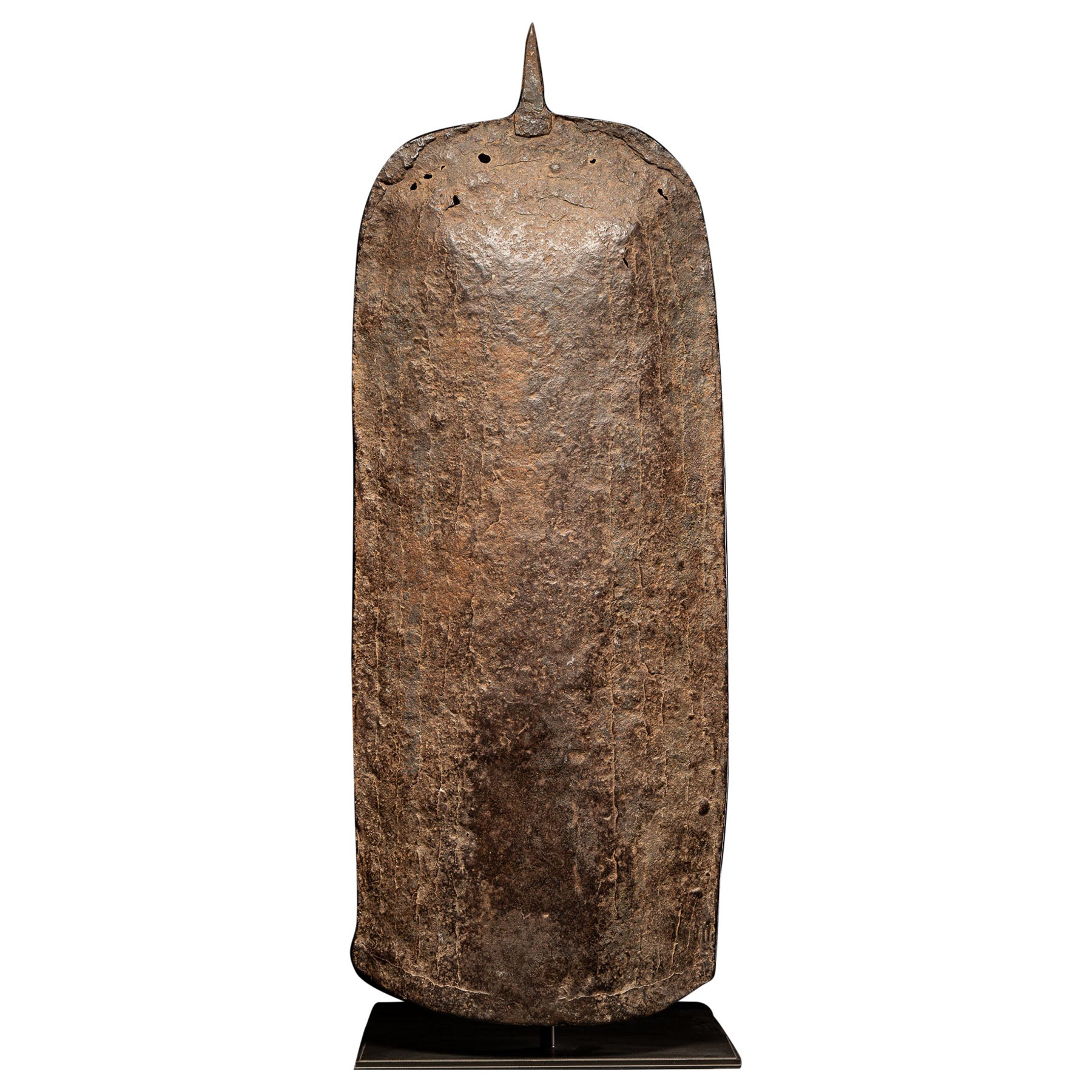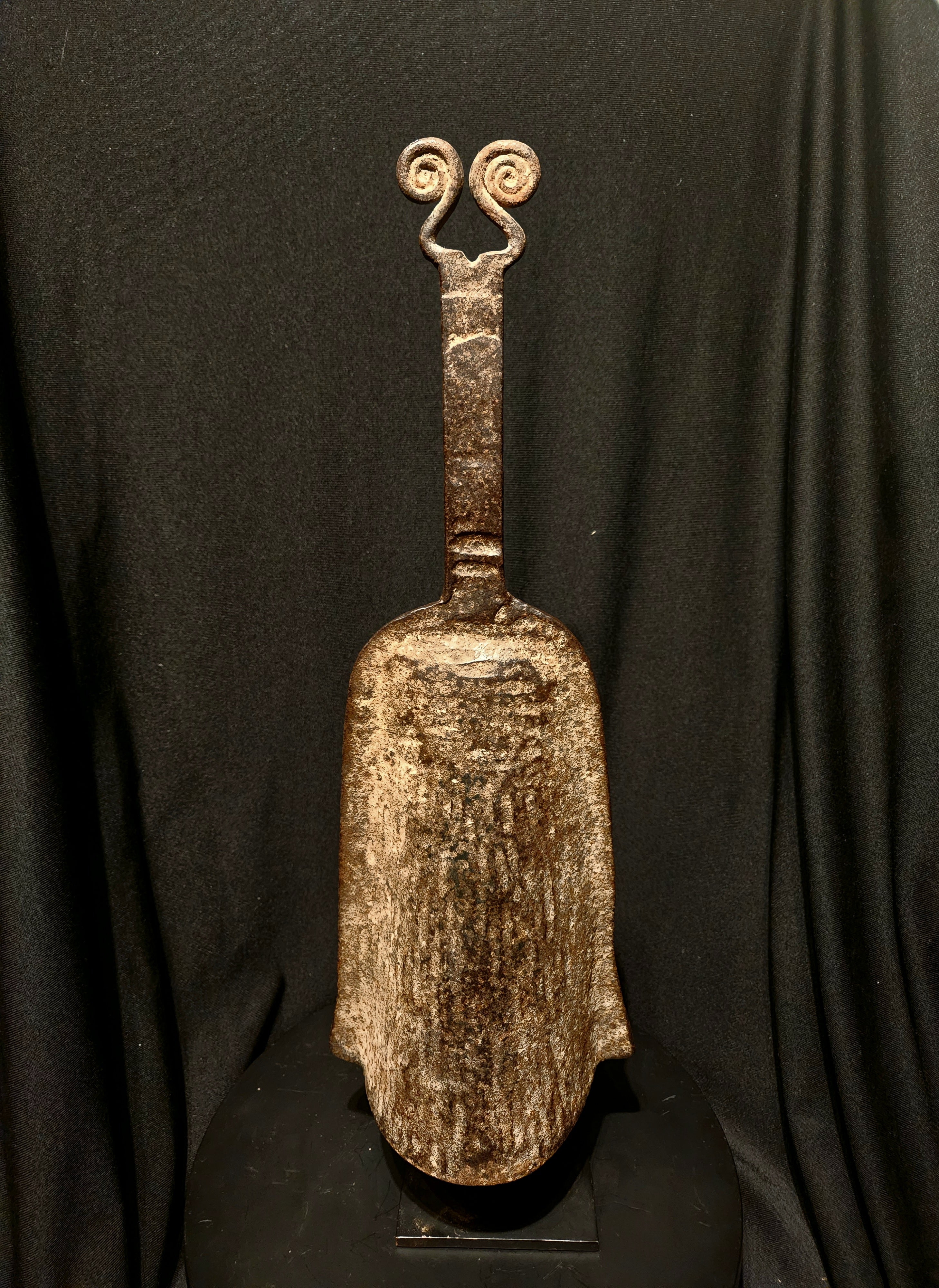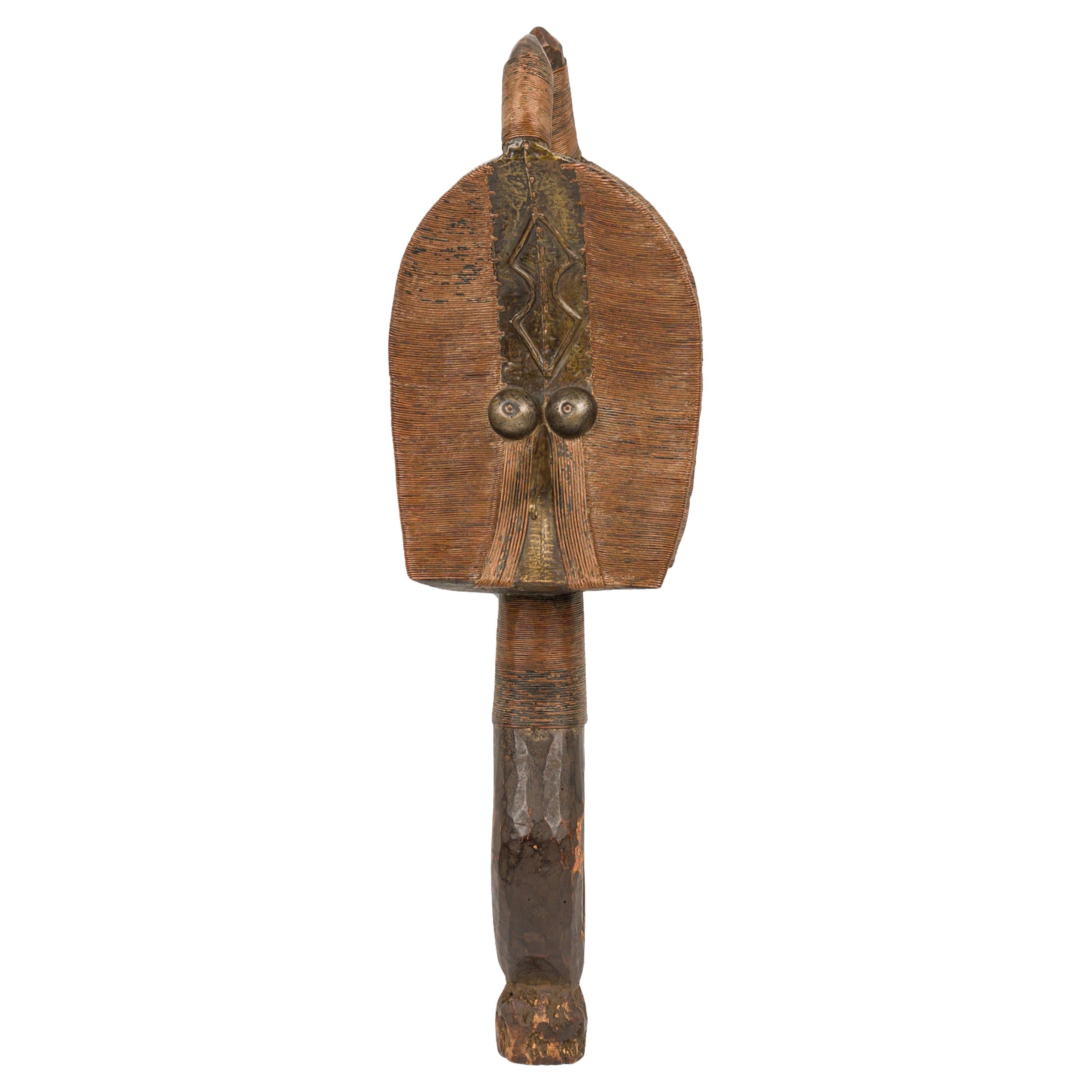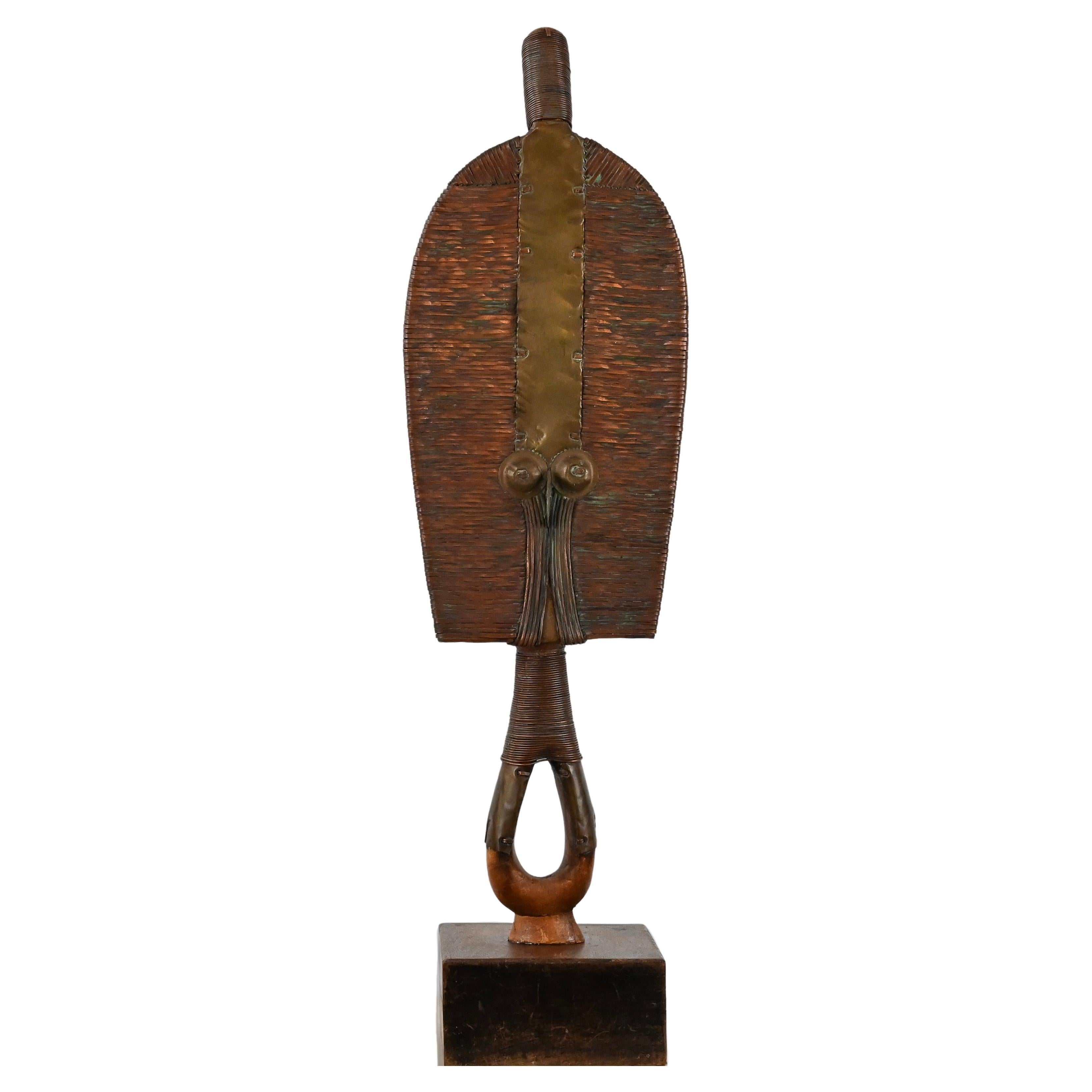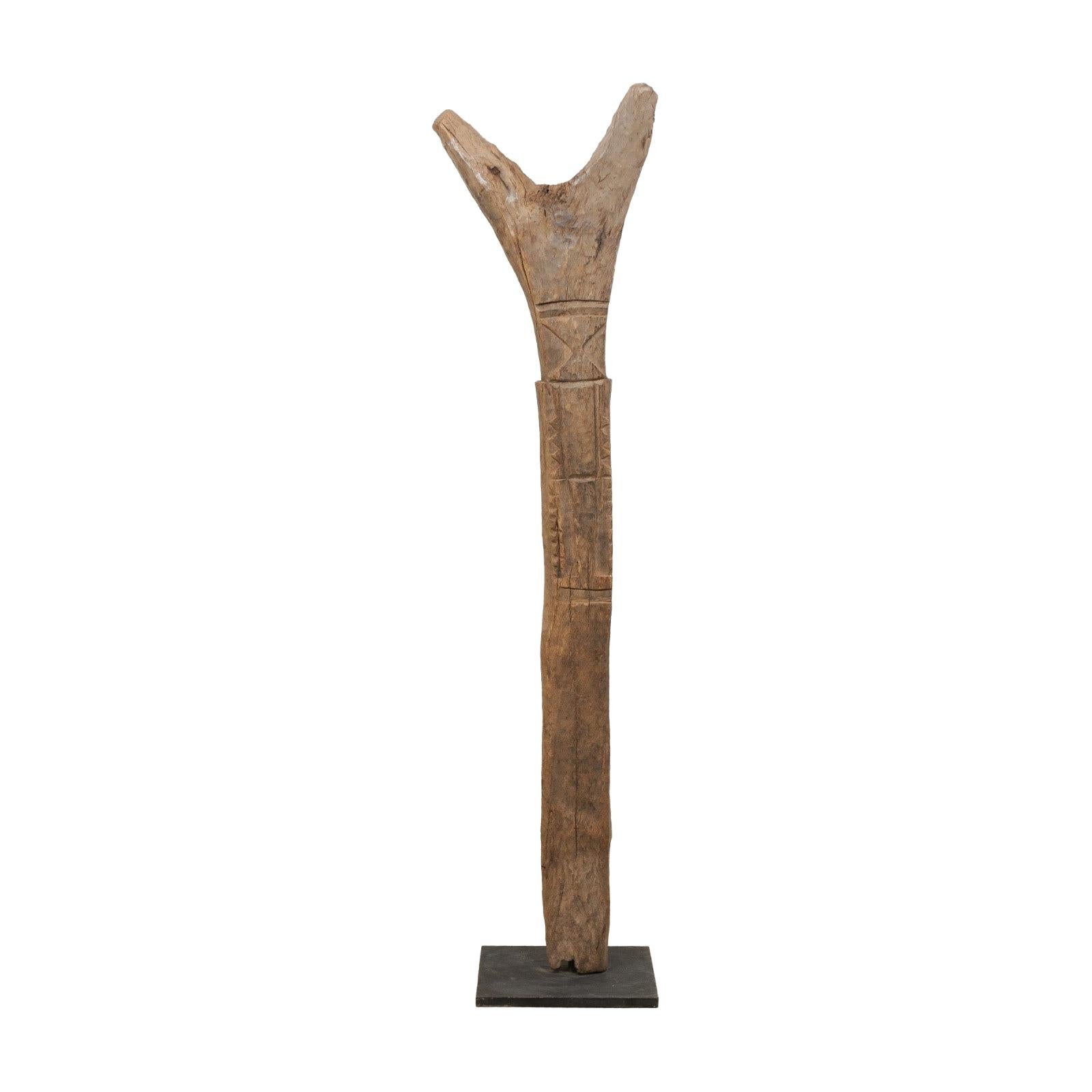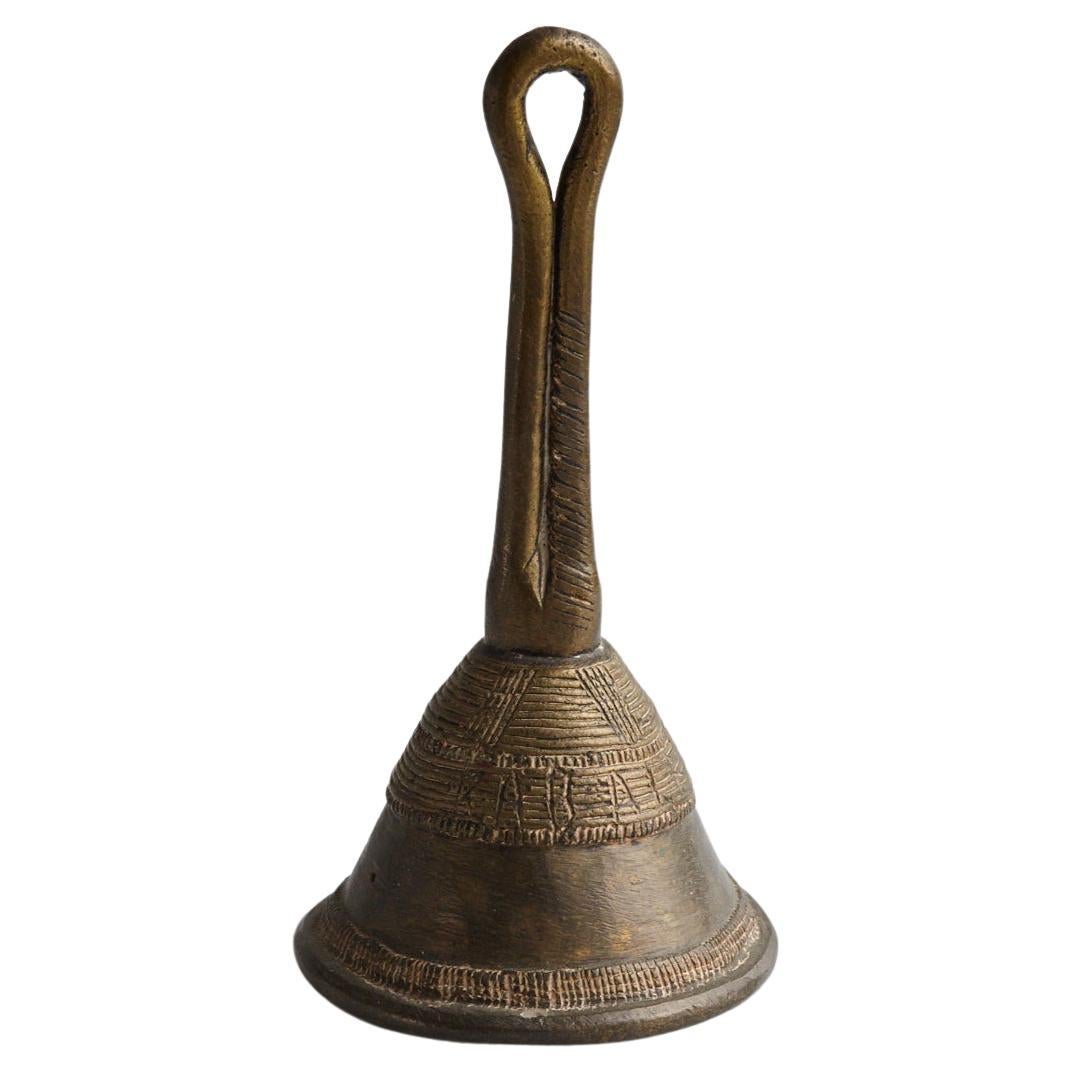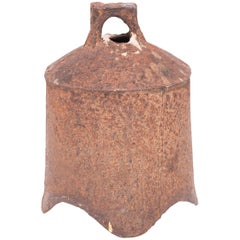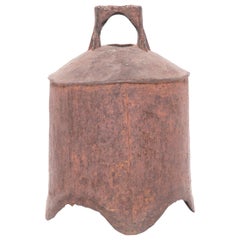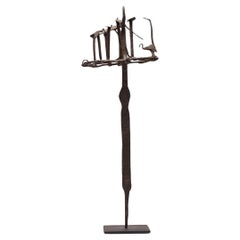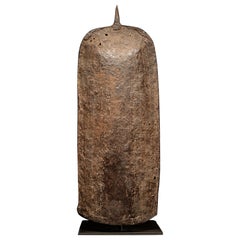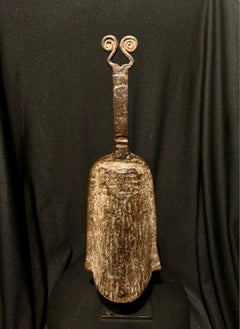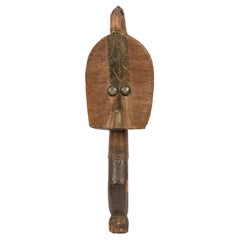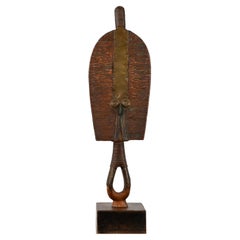Items Similar to Yoruba Omo Bell, c. 1900
Want more images or videos?
Request additional images or videos from the seller
1 of 6
Yoruba Omo Bell, c. 1900
$1,880
£1,435.53
€1,634.40
CA$2,639.82
A$2,885.84
CHF 1,526.74
MX$34,533.67
NOK 19,425.54
SEK 17,782.12
DKK 12,207.99
About the Item
This four-sided brass face bell, known as omo, was created by an artisan of the Ijebu Yoruba People of Southern Nigeria. A mark of the wearer's rank and power, the bell would have been displayed by a prominent chief, worn at the left hip by a long sash draped over the right shoulder. The stylized eyes and nose on this face bell represent the chief's innate wisdom and ability to perceive the human condition, expressions of the chief's inner authority. Elevated on a custom steel stand, the bell's acoustical curves and rich patina now offer a unique sculptural presence.
- Dimensions:Height: 9.5 in (24.13 cm)Width: 3.25 in (8.26 cm)Depth: 3.25 in (8.26 cm)
- Style:Tribal (In the Style Of)
- Materials and Techniques:
- Place of Origin:
- Period:
- Date of Manufacture:circa 1900
- Condition:Wear consistent with age and use.
- Seller Location:Chicago, IL
- Reference Number:Seller: CAA07981stDibs: LU820018130902
About the Seller
5.0
Platinum Seller
Premium sellers with a 4.7+ rating and 24-hour response times
Established in 1997
1stDibs seller since 2006
1,747 sales on 1stDibs
Typical response time: 2 hours
- ShippingRetrieving quote...Shipping from: Chicago, IL
- Return Policy
More From This Seller
View All19th Century Chinese Iron Bell
Located in Chicago, IL
This rustic, 19th-century iron bell once pealed in celebration or gave notice of important events in a town in northern China. Marked with holes to affix the...
Category
Antique Mid-19th Century Chinese Qing Garden Ornaments
Materials
Iron
19th Century Chinese Iron Bell
Located in Chicago, IL
This rustic, 19th century iron bell once pealed in celebration or gave notice of important events in a town in northern China. The shoulder of the bell is adorned with subtle decorat...
Category
Antique Mid-19th Century Chinese Rustic Garden Ornaments
Materials
Iron
Yoruba Osanyin Healing Staff, c. 1900
Located in Chicago, IL
To cure mental and physical ailments, Yoruba priests and diviners invoke the aid of Osanyin, the god of herbal medicines. Used in divination rituals to cure the afflicted, this iron ...
Category
Early 20th Century Nigerian Tribal Tribal Art
Materials
Iron
Nigerian Nupe Vessel Support
By Nupe
Located in Chicago, IL
The Nupe people of Nigeria were touted as some of the finest ceramicists in Africa. Everyday objects like this elegant, cylindrical vessel support received detailed attention. This f...
Category
Early 20th Century Nigerian Primitive Abstract Sculptures
Materials
Terracotta
Chinese Wanli-Era Cast Iron Bell
Located in Chicago, IL
A cast iron bell, when struck with a wooden beam, announced the time of day to villagers. This monumental example is covered in relief casts of chrysant...
Category
Antique Early 17th Century Chinese Ming Garden Ornaments
Materials
Iron
Grand Chinese Qing Dynasty Village Bell, circa 1800
Located in Chicago, IL
This lovely Qing-dynasty bell once pealed in a Chinese village, sounding out in celebration or giving notice of important events. Expertly forged, the cast-iron bell is detailed with characters in intricate relief, and its exaggerated scallop rim is traced with oversized rivets. Frosted with snow or lit from within by flickering candles, this sculptural bell takes on a magical presence in the winter...
Category
Antique Early 19th Century Chinese Qing Garden Ornaments
Materials
Iron
You May Also Like
Ethnic design - Iron Bell Currency, Dowayo People, Cameroon
Located in Leuven , BE
Used as forms of currency, they could also serve as a musical or ritual object. Displayed on a custom mount.
Category
Antique 19th Century Cameroonian Mounted Objects
Materials
Iron
Benin Iron Striker Bell
Located in Culver City, CA
An elegant Benin Iron Striker Bell with a double spiral finial on the top, and a lovely bell-shaped body. This is an extremely fine example of the African blacksmiths artistry. Kingd...
Category
Antique Late 19th Century African Tribal Mounted Objects
Materials
Iron
$1,500
African Gabon 20th Century Handmade Kota Reliquary
Located in Queens, NY
Gabonese 20th c. Reliquary hand made by the Kota people depicting a 2-sided / faced abstract figure with domed eyes and hooked noses, crafted from carved wood, copper and bronze
Category
20th Century African Tribal Figurative Sculptures
Materials
Bone
African Tribal Statue Osseyba or Reliquary Figure Kota Mohongwe Peoples Art
Located in Miami, FL
A fantastically hand-crafted piece by the Kota (or Bakota) tribe who are located in the northeastern region of Gabon. This figure, which is a Mahongwe reliquary figure as exhibited with its truncated almond-shaped face, is made of wound copper, hammered brass and wood. Reliquary figures were used as guardians to protect the revered bones of venerated family ancestors and leaders and ward off unwanted spirits. These figures are meant to embody intense powers and were also commonly used in communal rites and ritual performances.
This particular piece came from an American collector who traveled the African continent and collected African artifacts for over 50 years. This piece has a beautiful, organically aged patina acquired naturally over time and use. It is mounted on a custom wooden display stand. We believe it dates back to the early to mid-1900s but could be older. We are listing as 20th century because we did not have it appraised.
This African Tribal Statue Osseyba or Reliquary Figure Kota (Bakota) Mohongwe Peoples decorative art would clearly stand out as part of a collection or by itself in any setting. Truly unique, eye-catching and engaging.
Dimensions on stand: 25 3/4" High, 7" Wide, 5 1/2" Deep
Kota Reliquary...
Category
Early 20th Century Gabonese Tribal Abstract Sculptures
Materials
Brass, Copper
A Dogon Tribe Toguna Post from Mali (Mid 20th C.) on Custom Iron Stand
Located in Atlanta, GA
An early to mid-20th century Toguna support post from the Dogon Tribe of Mali, on custom metal stand. This West African hand carved wooden bean was origin...
Category
Mid-20th Century Malian Mounted Objects
Materials
Iron
Bronze Dan Bell, Cote d'Ivoire, 1960s
Located in Aramits, Nouvelle-Aquitaine
Bronze Dan (also called Yakuba) bell, Cote d'Ivoire, circa 1960s.
This Dan bell is made from the lost-wax process. It has a looped handle and stylized designs on the bell and around ...
Category
Vintage 1960s Ivorian Tribal Tribal Art
Materials
Bronze
More Ways To Browse
Metal Bell
Antique Brass Bell
Nigeria Sculpture
Antique Metal Bells
Bell Stand
Antique Bell Stand
Yoruba Sculpture
Quartz Crystal Carved Sculpture
Disc Sculpture
Italian Artifacts
Stone Disc
Musical Figures
Wood Gilt Fragments
Wooden Sculpture Stand
The Phantom Of The Opera
18th Century Artifacts
18th Century Carved Shell
Jade Stand
